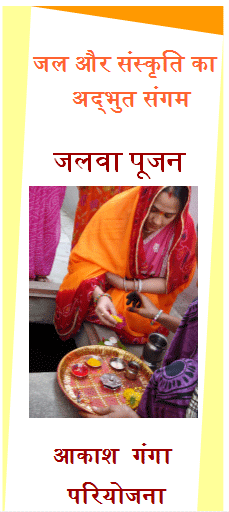
|
Jalwa Pooja
Function done after about a month of the delivery. In that function new mother worships at the Well and gifts are exchanged between relatives and new mother and after that function the mother starts doing routine houshold works. This rite is also called Kua poojan ki rasam .After birth of child a women is not allowed to do any kind of work unless she completes this tradition. This is done after 45 days from birth of child. During first few weeks of delivery she eats only sweet food like Halwa Goond sweet fruits etc.
Gangaur
Gangaur (गणगौर) is a festival celebrated in Rajasthan and some parts of Gujarat and Madhya Pradesh.
Gangaur is the colourful and the one of the most important festivals of people of Rajasthan and is observed throughout the state with great fervour and devotion by womenfolk who worship Gauri, the consort of Lord Shiva during March–April. It is the celebration of spring, harvest and marital fidelity. Gana is a synonym for Lord Shiva and Gaur which stands for Gauri or Parvati who symbolizes Saubhagya (marital bliss). The unmarried women worship her for being blessed good husband, while married women do so for the welfare, health and long life of their husbands and happy married life.
The festival commences on the first day of chaitra, the day following Holi and continues for 18 days. For a newly-wedded girl, it is binding to observe the full course of 18 days of the festival that succeeds her marriage. Even unmarried girls fast for the full period of the 18 days and eat only one meal a day. Festivity consummates on 3rd day of Shukla Paksha of Chaitra Month. Fairs (Gangaur Melas) are held throughout the 18 day period.
The festival reaches its climax during the last three days. The images of Gauri and Isar are dressed in new garments especially made for the occasion. Unmarried girls and married women decorate the images and make them look like living figures.
At an auspicious hour in the afternoon, a procession is taken out to a garden, bawdi or johad or well with the images of Isar and Gauri, placed on the heads of married women. Songs are sung about the departure of Gauri to her husband's house. The procession comes back after offering water to the first two days. On the final day, she faces in the same direction as Isar and the procession concludes in the consignment of the all images in the waters of a tank or a well. The women bid farewell to Gauri and turn their eyes and the Gangaur festival comes to an end.
There is a popular saying in Rajasthani Language about Gangaur:
Teej
The 3rd day of the Shrawan month, the day of 'surangi'(colorful)Teej; middle of rainy season; greenery all around; rows and columns of dark clouds disbursing rains everywhere. The festival celebrates the youthfulness of the nature and humanity. The newlywed daughters are brought to their parental homes. They, singing folk songs on the theme of love and nature, go to village ponds and take bath. Young ladies in pairs can be seen taking ride on "Jhula" (swing made from grass rope, two ropes suspended from a branch of a tree and tied to a foot board to stand on). Kheer is cooked in every home.
There is a popular saying in Rajasthani Language about Gangaur:
|